Calculation of air heating: basic principles + calculation example
Installation of a heating system is impossible without preliminary calculations.The information obtained must be as accurate as possible, so air heating calculations are carried out by experts using specialized programs, taking into account the nuances of the design.
You can calculate the air heating system (hereinafter referred to as the air heating system) yourself, having basic knowledge of mathematics and physics.
In this material we will tell you how to calculate the level of heat loss at home and the heat loss system. To make everything as clear as possible, specific examples of calculations will be given.
The content of the article:
Calculation of heat loss at home
To select a heating system, it is necessary to determine the amount of air for the system, the initial temperature of the air in the air duct for optimal heating of the room. To find out this information, you need to calculate the heat loss of the house, and start basic calculations later.
Any building loses thermal energy during cold weather. The maximum amount of it leaves the room through the walls, roof, windows, doors and other enclosing elements (hereinafter referred to as OK), facing one side onto the street.
To ensure a certain temperature in the house, you need to calculate the thermal power that can compensate for heat costs and maintain desired temperature.
There is a misconception that heat losses are the same for every home.Some sources claim that 10 kW is enough to heat a small house of any configuration, others are limited to 7-8 kW per square meter. meter.
According to a simplified calculation scheme, every 10 m2 of the exploited area in the northern regions and areas of the middle zone should be provided with a supply of 1 kW of thermal power. This figure, individual for each building, is multiplied by a factor of 1.15, thereby creating a reserve of thermal power in case of unexpected losses.
However, such estimates are rather rough; moreover, they do not take into account the qualities, features of the materials used in the construction of the house, climatic conditions and other factors affecting heat costs.
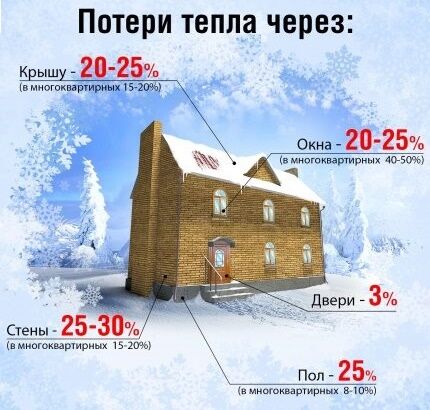
If modern construction materials were used in the construction of the house materials thermal conductivity which are low, then the heat loss of the structure will be smaller, which means that less thermal power will be required.
If you take heating equipment that generates more power than necessary, then excess heat will appear, which is usually compensated by ventilation. In this case, additional financial costs arise.
If low-power equipment is selected for the HVAC, then there will be a shortage of heat in the room, since the device will not be able to generate the required amount of energy, which will require the purchase of additional heating units.

Thermal costs of a building depend on:
- structure of enclosing elements (walls, ceilings, etc.), their thickness;
- heated surface area;
- orientation relative to the cardinal directions;
- minimum temperature outside the window in the region or city for 5 winter days;
- duration of the heating season;
- processes of infiltration, ventilation;
- domestic heat gains;
- heat consumption for domestic needs.
It is impossible to correctly calculate heat losses without taking into account infiltration and ventilation, which significantly affect the quantitative component. Infiltration is a natural process of movement of air masses that occurs during the movement of people around the room, opening windows for ventilation and other household processes.
Ventilation is a specially installed system through which air is supplied, and the air can enter the room at a lower temperature.
Heat enters the room not only through the heating system, but also through heating electrical appliances, incandescent lamps, and people. It is also important to take into account the heat consumption for heating cold items brought from the street and clothing.
Before choosing equipment for SVO, heating system design It is important to calculate heat loss at home with high accuracy. This can be done using the free Valtec program. In order not to delve into the intricacies of the application, you can use mathematical formulas that provide high accuracy of calculations.
To calculate the total heat losses Q of a dwelling, it is necessary to calculate the heat costs of the enclosing structures Qorg.k, energy consumption for ventilation and infiltration Qv, take into account household expenses Qt. Losses are measured and recorded in Watts.
To calculate the total heat consumption Q, use the formula:
Q = Qorg.k +Qv — Qt
Next, consider the formulas for determining heat costs:
Qorg.k ,Qv,Qt.
Determination of heat loss from enclosing structures
The greatest amount of heat escapes through the enclosing elements of the house (walls, doors, windows, ceiling and floor). To determine Qorg.k it is necessary to separately calculate the heat loss incurred by each structural element.
That is, Qorg.k calculated by the formula:
Qorg.k =Qpol +Qst +Qokn +Qpt +Qdv
To determine the Q of each element of the house, you need to know its structure and thermal conductivity coefficient or thermal resistance coefficient, which is indicated in the material passport.
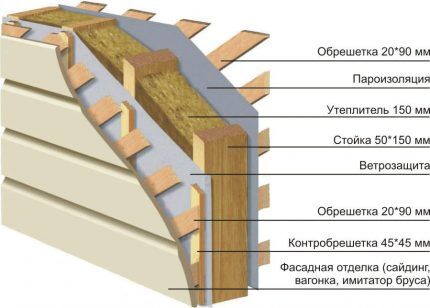
Calculation of heat losses occurs for each homogeneous layer of the enclosing element. For example, if a wall consists of two dissimilar layers (insulation and brickwork), then the calculation is made separately for the insulation and for the brickwork.
The thermal consumption of the layer is calculated taking into account the desired temperature in the room using the expression:
Qst = S × (tv -tn) × B × l/k
In an expression, variables have the following meaning:
- S—layer area, m2;
- tv – desired temperature in the house, °C; for corner rooms the temperature is taken 2 degrees higher;
- tn — average temperature of the coldest 5-day period in the region, °C;
- k is the thermal conductivity coefficient of the material;
- B – thickness of each layer of the enclosing element, m;
- l – tabular parameter, takes into account the peculiarities of heat consumption for OKs located in different directions of the world.
If windows or doors are built into the wall for which the calculation is being made, then when calculating Q, it is necessary to subtract the area of the window or door from the total area OK, since their heat consumption will be different.
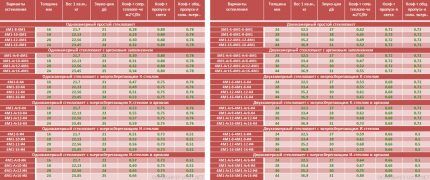
The thermal resistance coefficient is calculated using the formula:
D = B/k
The formula for heat loss for a single layer can be presented as:
Qst = S × (tv -tn) × D × l
In practice, to calculate the Q of floors, walls or ceilings, the D coefficients of each OK layer are calculated separately, summed up and substituted into the general formula, which simplifies the calculation process.
Accounting for infiltration and ventilation costs
Low temperature air can enter the room from the ventilation system, which significantly affects heat loss. The general formula for this process is:
Qv = 0.28 × Ln × pv × c × (tv -tn)
In an expression, alphabetic characters have meaning:
- Ln – incoming air flow, m3/h;
- pv — air density in the room at a given temperature, kg/m3;
- tv – temperature in the house, °C;
- tn — average temperature of the coldest 5-day period in the region, °C;
- c is the heat capacity of air, kJ/(kg*°C).
Parameter Ln taken from the technical characteristics of the ventilation system. In most cases, the supply air exchange has a specific flow rate of 3 m3/h, based on which Ln calculated by the formula:
Ln = 3 × Spol
In formula Spol — floor area, m2.
Indoor air density pv is determined by the expression:
pv = 353/273+tv
Here tv – the set temperature in the house, measured in °C.
Heat capacity c is a constant physical quantity and is equal to 1.005 kJ/(kg × °C).
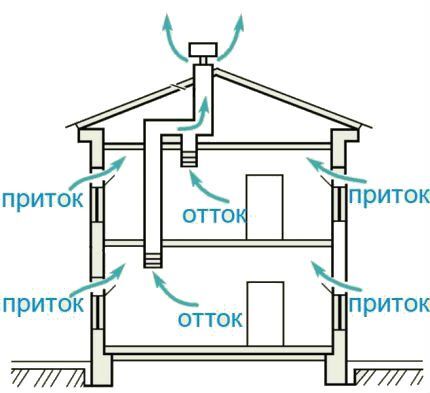
Unorganized ventilation, or infiltration, is determined by the formula:
Qi = 0.28 × ∑Gh × c×(tv -tn) × kt
In the equation:
- Gh — air flow through each fence is a table value, kg/h;
- kt — coefficient of influence of thermal air flow, taken from the table;
- tv ,tn — set temperatures indoors and outdoors, °C.
When the doors are opened, the most significant air heat loss occurs, therefore, if the entrance is equipped with air-thermal curtains, they should also be taken into account.
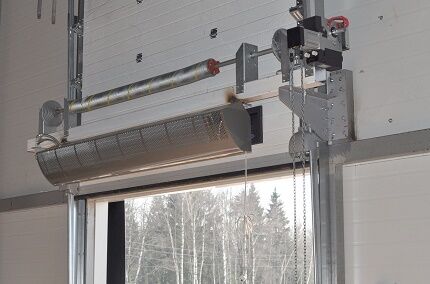
To calculate the heat loss of doors, the formula is used:
Qot.d =Qdv × j × H
In the expression:
- Qdv — calculated heat loss of external doors;
- H—building height, m;
- j is a tabular coefficient depending on the type of doors and their location.
If the house has organized ventilation or infiltration, then calculations are made using the first formula.
The surface of the enclosing structural elements may be heterogeneous - there may be cracks and leaks through which air passes. These heat losses are considered insignificant, but they can also be determined.This can be done exclusively using software methods, since it is impossible to calculate some functions without using applications.
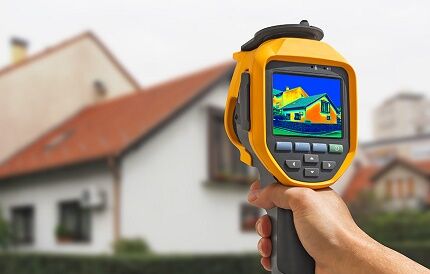
Domestic heat gains
Additional heat enters the room through electrical appliances, the human body, and lamps, which is also taken into account when calculating heat losses.
It has been experimentally established that such inputs cannot exceed 10 W per 1 m2. Therefore, the calculation formula may look like:
Qt = 10 × Spol
In the expression Spol — floor area, m2.
Basic methodology for calculating SVO
The basic operating principle of any air cooler is the transfer of thermal energy through air by cooling the coolant. Its main elements are a heat generator and a heat pipe.
Air is supplied to the room already heated to a temperature trto maintain the desired temperature tv. Therefore, the amount of accumulated energy must be equal to the total heat loss of the building, that is, Q. The equality holds:
Q = Eot × c×(tv -tn)
In formula E is the flow rate of heated air kg/s for heating the room. From equality we can express Eot:
Eot = Q/ (c × (tv -tn))
Let us recall that the heat capacity of air is c=1005 J/(kg×K).
The formula determines exclusively the amount of supplied air used only for heating only in recirculation systems (hereinafter referred to as RSVO).

If the air cooler is used as ventilation, then the amount of supplied air is calculated as follows:
- If the amount of air for heating exceeds the amount of air for ventilation or is equal to it, then the amount of air for heating is taken into account, and the system is selected as direct-flow (hereinafter referred to as PCVO) or with partial recirculation (hereinafter referred to as CHRSVO).
- If the amount of air for heating is less than the amount of air required for ventilation, then only the amount of air required for ventilation is taken into account, a PSVO is introduced (sometimes - a PRVO), and the temperature of the supplied air is calculated using the formula: tr = tv + Q/c × Event.
If the indicator t exceedsr permissible parameters, the amount of air introduced through ventilation should be increased.
If there are sources of constant heat generation in the room, then the temperature of the supplied air is reduced.
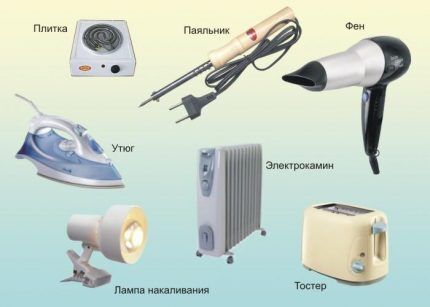
For a single room, the indicator tr may turn out to be different. Technically, it is possible to implement the idea of supplying different temperatures to individual rooms, but it is much easier to supply air of the same temperature to all rooms.
In this case, the total temperature tr take the one that turns out to be the smallest. Then the amount of supplied air is calculated using the formula determining Eot.
Next, we determine the formula for calculating the volume of incoming air Vot at its heating temperature tr:
Vot = Eot/pr
The answer is written in m3/h.
However, the air exchange in the room Vp will differ from the value Vot, since it must be determined based on the internal temperature tv:
Vot = Eot/pv
In the formula for determining Vp and Vot air density indicators pr and pv (kg/m3) are calculated taking into account the temperature of the heated air tr and room temperature tv.
Supply room temperature tr must be higher than tv. This will reduce the amount of supplied air and will reduce the size of the channels of systems with natural air movement or reduce electricity costs if mechanical stimulation is used to circulate the heated air mass.
Traditionally, the maximum temperature of air entering the room when supplied at a height exceeding 3.5 m should be 70 °C. If air is supplied at a height of less than 3.5 m, then its temperature is usually equal to 45 ° C.
For residential premises with a height of 2.5 m, the permissible temperature limit is 60 °C. When the temperature is set higher, the atmosphere loses its properties and is unsuitable for inhalation.
If air-thermal curtains are located at external gates and openings facing outside, then the incoming air temperature is allowed to be 70 °C, for curtains located in external doors up to 50 °C.
The supplied temperature is influenced by the methods of air supply, the direction of the jet (vertical, inclined, horizontal, etc.). If there are always people in the room, the supply air temperature should be reduced to 25 °C.
After making preliminary calculations, you can determine the required heat input for heating the air.
For RSVO heat costs Q1 are calculated by the expression:
Q1 = Eot × (tr -tv) × c
For PSVO calculation Q2 produced according to the formula:
Q2 = Event × (tr -tv) × c
Heat consumption Q3 for FER is found by the equation:
Q3 = [Eot ×(tr -tv) + Event × (tr -tv)]× c
In all three expressions:
- Eot and Event — air flow in kg/s for heating (Eot) and ventilation (Event);
- tn — outside air temperature in °C.
The remaining characteristics of the variables are the same.
In CHRSVO, the amount of recirculated air is determined by the formula:
Erec = Eot —Event
Variable Eot expresses the amount of mixed air heated to temperature tr.
There is a peculiarity in PSVO with natural impulse - the amount of moving air changes depending on the temperature outside. If the outside temperature drops, the system pressure increases. This leads to an increase in air flow into the house. If the temperature rises, the reverse process occurs.
Also, in air coolers, unlike ventilation systems, air moves with a lower and varying density compared to the density of the air surrounding the air ducts.
Because of this phenomenon, the following processes occur:
- Coming from the generator, the air passing through the air ducts is noticeably cooled while moving
- With natural movement, the amount of air entering the room changes over the course of the heating season.
The above processes are not taken into account if the air circulation system uses fans to circulate air; it also has a limited length and height.
If the system has many branches, is quite extensive, and the building is large and tall, then it is necessary to reduce the process of air cooling in the air ducts, reduce the redistribution of air entering under the influence of natural circulation pressure.

To control the air cooling process, thermal calculations of air ducts are performed. To do this, you need to set the initial air temperature and clarify its flow using formulas.
To calculate the heat flux Qohl through the walls of the air duct, the length of which is l, use the formula:
Qohl = q1 × l
In the expression, the value q1 denotes the heat flow passing through the walls of an air duct 1 m long. The parameter is calculated by the expression:
q1 =k×S1 ×(tsr -tv) = (tsr -tv)/D1
In equation D1 - heat transfer resistance from heated air with average temperature tsr through area S1 walls of an air duct 1 m long in a room at a temperature tv.
The heat balance equation looks like this:
q1l = Eot × c × (tnach -tr)
In the formula:
- Eot — the amount of air required for heating the room, kg/h;
- c is the specific heat capacity of air, kJ/(kg °C);
- tnac — air temperature at the beginning of the air duct, °C;
- tr — temperature of air released into the room, °C.
The heat balance equation allows you to set the initial temperature of the air in the air duct at a given final temperature and, conversely, find out the final temperature at a given initial temperature, as well as determine the air flow.
Temperature tnach can also be found using the formula:
tnach = tv + ((Q + (1 - η) × Qohl)) × (tr -tv)
Here η is part of Qohl, entering the room, is taken equal to zero in calculations. The characteristics of the remaining variables were mentioned above.
The refined formula for hot air consumption will look like this:
Eot = (Q + (1 - η) × Qohl)/(c × (tsr -tv))
All letter values in the expression were defined above. Let's move on to consider an example of calculating air heating for a specific house.
An example of calculating heat loss at home
The house in question is located in the city of Kostroma, where the temperature outside during the coldest five-day period reaches -31 degrees, the ground temperature is +5 °C. The desired room temperature is +22 °C.
We will consider a house with the following dimensions:
- width - 6.78 m;
- length - 8.04 m;
- height - 2.8 m.
The values will be used to calculate the area of the enclosing elements.
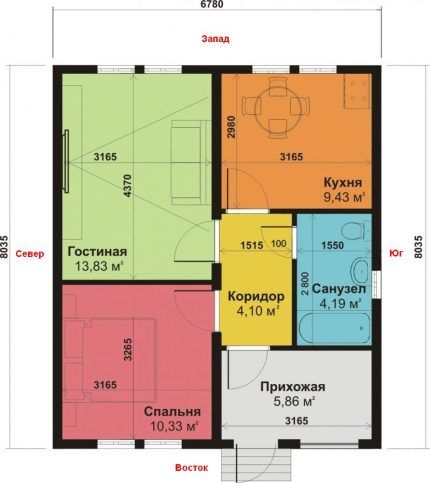
The walls of the building consist of:
- aerated concrete with thickness B=0.21 m, thermal conductivity coefficient k=2.87;
- foam plastic B=0.05 m, k=1.678;
- facing brick B=0.09 m, k=2.26.
When determining k, you should use information from tables, or better yet, information from a technical data sheet, since the composition of materials from different manufacturers may differ and, therefore, have different characteristics.

The floor of the house consists of the following layers:
- sand, B=0.10 m, k=0.58;
- crushed stone, B=0.10 m, k=0.13;
- concrete, B=0.20 m, k=1.1;
- ecowool insulation, B=0.20 m, k=0.043;
- reinforced screed, B=0.30 m k=0.93.
In the above house plan, the floor has the same structure throughout the entire area; there is no basement.
The ceiling consists of:
- mineral wool, B=0.10 m, k=0.05;
- plasterboard, B=0.025 m, k= 0.21;
- pine panels, B=0.05 m, k=0.35.
The ceiling has no access to the attic.
There are only 8 windows in the house, all of them are double-chamber with K-glass, argon, D = 0.6. Six windows have dimensions of 1.2x1.5 m, one - 1.2x2 m, one - 0.3x0.5 m. The doors have dimensions of 1x2.2 m, the D value according to the passport is 0.36.
Calculation of heat losses of walls
We will calculate heat losses for each wall separately.
First, let's find the area of the northern wall:
Ssev = 8.04 × 2.8 = 22.51
There are no doorways or window openings on the wall, so we will use this S value in the calculations.

Based on the composition of the wall, we find its total thermal resistance equal to:
Ds.sten =Dgb +Dpn +Dkr
To find D we use the formula:
D = B/k
Then, substituting the original values, we get:
Ds.sten = 0.21/2.87 + 0.05/1.678 + 0.09/2.26 = 0.14
For calculations we use the formula:
Qst = S × (tv -tn) × D × l
Considering that the coefficient l for the northern wall is 1.1, we obtain:
Qsev.st = 22.51 × (22 + 31) × 0.14 × 1.1 = 184
In the southern wall there is one window with the area:
Sok3 = 0.5 × 0.3 = 0.15
Therefore, in calculations, it is necessary to subtract the S window from the S of the southern wall in order to obtain the most accurate results.
Syuj.s = 22.51 — 0.15 = 22.36
The parameter l for the south direction is equal to 1. Then:
Qsev.st = 22.36 × (22 + 31) × 0.14 × 1 = 166
For the eastern and western walls, the clarifying coefficient is l=1.05, so it is enough to calculate the surface area OK without taking into account S windows and doors.
Sok1 = 1.2 × 1.5 × 6 = 10.8
Sok2 = 1.2 × 2 = 2.4
Sd = 1 × 2.2 = 2.2
Szap+vost = 2 × 6.78 × 2.8 — 2.2 — 2.4 — 10.8 = 22.56
Then:
Qzap+vost = 22.56 × (22 + 31) × 0.14 × 1.05 = 176
Ultimately, the total Q of the walls is equal to the sum of the Q of all the walls, that is:
Qsten = 184 + 166 + 176 = 526
In total, heat escapes through the walls in the amount of 526 W.
Heat loss through windows and doors
The house plan shows that the doors and 7 windows face east and west, therefore, parameter l=1.05. The total area of 7 windows, taking into account the above calculations, is equal to:
Sokn = 10.8 + 2.4 = 13.2
For them, Q, taking into account the fact that D = 0.6, will be calculated as follows:
Qok4 = 13.2 × (22 + 31) × 0.6 × 1.05 = 630
Let's calculate Q of the south window (l=1).
Qok5 = 0.15 × (22 + 31) × 0.6 × 1 = 5
For doors D=0.36, and S=2.2, l=1.05, then:
Qdv = 2.2 × (22 + 31) × 0.36 × 1.05 = 43
Let us sum up the resulting heat losses and get:
Qok+dv = 630 + 43 + 5 = 678
Next, we determine Q for the ceiling and floor.
Calculation of heat loss from ceiling and floor
For ceiling and floor l=1. Let's calculate their area.
Spol = Spot = 6.78 × 8.04 = 54.51
Taking into account the composition of the floor, we determine the general D.
Dpol = 0.10/0.58 + 0.10/0.13 + 0.2/1.1 + 0.2/0.043 + 0.3/0.93 =61
Then the heat losses of the floor, taking into account the fact that the temperature of the earth is +5, are equal to:
Qpol = 54.51 × (21 — 5) × 6.1 × 1 = 5320
Let's calculate the total D of the ceiling:
Dpot = 0.10/0.05 + 0.025/0.21 + 0.05/0.35 = 2.26
Then Q of the ceiling will be equal to:
Qpot = 54.51 × (22 + 31) × 2.26 = 6530
The total heat loss through the OK will be equal to:
Qogr.k = 526 + 678 +6530 + 5320 = 13054
In total, the heat loss of the house will be equal to 13054 W or almost 13 kW.
Calculation of heat and ventilation losses
The room is ventilated with a specific air exchange rate of 3 m3/h, the entrance is equipped with an air-thermal canopy, so for calculations it is enough to use the formula:
Qv = 0.28 × Ln × pv × c × (tv -tn)
Let's calculate the air density in the room at a given temperature of +22 degrees:
pv = 353/(272 + 22) = 1.2
Parameter Ln equal to the product of specific consumption by floor area, that is:
Ln = 3 × 54.51 = 163.53
The heat capacity of air c is 1.005 kJ/(kg× °C).
Taking into account all the information, we find Q ventilation:
Qv = 0.28 × 163.53 × 1.2 × 1.005 × (22 + 31) = 3000
The total heat consumption for ventilation will be 3000 W or 3 kW.
Household heat gains
Household income is calculated using the formula.
Qt = 10 × Spol
That is, substituting the known values, we get:
Qt = 54.51 × 10 = 545
To summarize, we can see that the total heat loss Q of the house will be equal to:
Q = 13054 + 3000 – 545 = 15509
Let's take Q=16000 W or 16 kW as the operating value.
Examples of calculations for SVO
Let the supply air temperature (tr) - 55 °C, desired room temperature (tv) - 22 °C, house heat loss (Q) - 16000 W.
Determination of the amount of air for RSVO
To determine the mass of supplied air at temperature tr The formula used is:
Eot = Q/(c × (tr -tv))
Substituting the parameter values into the formula, we get:
Eot = 16000/(1.005 × (55 — 22)) = 483
The volumetric amount of supplied air is calculated by the formula:
Vot = Eot /pr,
Where:
pr = 353/(273 + tr)
First, let's calculate the density p:
pr = 353/(273 + 55) = 1.07
Then:
Vot = 483/1.07 = 451.
Air exchange in the room is determined by the formula:
Vp = Eot /pv
Let's determine the air density in the room:
pv = 353/(273 + 22) = 1.19
Substituting the values into the formula, we get:
Vp = 483/1.19 = 405
Thus, the air exchange in the room is 405 m3 per hour, and the volume of supplied air should be equal to 451 m33 in an hour.
Calculation of the amount of air for CHRSVO
To calculate the amount of air for the FER, we take the information obtained from the previous example, as well as tr = 55 °С, tv = 22 °C; Q=16000 W.Amount of air required for ventilation, Event=110 m3/h. Estimated outside temperature tn=-31 °C.
To calculate NER we use the formula:
Q3 = [Eot ×(tr -tv) + Event × pv × (tr -tv)] × c
Substituting the values, we get:
Q3 = [483 × (55 — 22) + 110 × 1.19 × (55 — 31)] × 1.005 = 27000
The volume of recirculated air will be 405-110=296 m3 per hour. Additional heat consumption is 27000-16000=11000 W.
Determination of initial air temperature
The resistance of a mechanical air duct is D=0.27 and is taken from its technical characteristics. The length of the air duct outside the heated room is l=15 m. It is determined that Q=16 kW, the internal air temperature is 22 degrees, and the required temperature for heating the room is 55 degrees.
Let's define Eot according to the above formulas. We get:
Eot = 10 × 3.6 × 1000/ (1.005 × (55 — 22)) = 1085
Heat flow value q1 will be:
q1 = (55 — 22)/0.27 = 122
The initial temperature with deviation η = 0 will be:
tnach = 22 + (16 × 1000 + 137 × 15) × (55 — 22)/ 1000 × 16 = 60
Let's clarify the average temperature:
tsr = 0.5 × (55 + 60) = 57.5
Then:
Qotkl = ((574 -22)/0.27) × 15 = 1972
Taking into account the information received, we find:
tnach = 22 + (16 × 1000 + 1972) × (55 — 22)/(1000 × 16) = 59
From this it follows that when air moves, 4 degrees of heat is lost. To reduce heat loss, it is necessary to insulate the pipes. We also recommend that you read our other article, which describes in detail the arrangement process air heating systems.
Conclusions and useful video on the topic
Informative video about calculating energy costs using the Ecxel program:
It is necessary to entrust CBO calculations to professionals, because only specialists have experience, relevant knowledge, and will take into account all the nuances when making calculations.
Do you have any questions, have you found any inaccuracies in the calculations given, or would you like to supplement the material with valuable information? Please leave your comments in the block below.
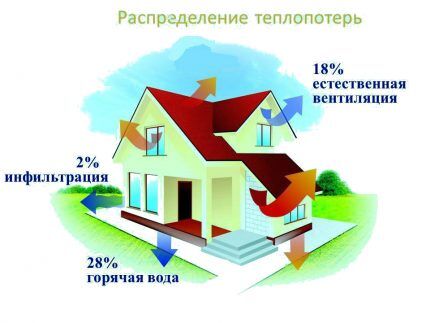




Such calculations of heat loss are made without fail at the design stage of houses. I had to explain to customers how they could save their money in the future on maintaining a house if the thermal calculations took into account the ratio of the costs of wall insulation and upcoming heating costs. Only using exact numbers, we can conclude that it is unreasonable to build walls that are too bulky and expensive, since these investments can exceed the savings on heating the house even over several decades.
And with an already finished house, will these calculations help improve efficiency? Unfortunately, at the stage of design and construction, I thought that “it will do.”
The air heating system is actually a very good thing, it is inexpensive and quite effective, but few people have the right idea about it. In Europe, this type of heating has been used for a very long time; we are behind the times. And its advantages are very significant: it quickly warms up the room, is inexpensive, and, in fact, it can be the only heating in the house.
The example shows a strange figure for the thermal conductivity coefficient of aerated concrete. It's quite overpriced. Even for d600 this is no more than 0.2
Everything was fine until it came to the video... It has long been proven that the walls do not need to be heated, but the air needs to be heated. For this reason, in case of a radiator, the radiators themselves should not be mounted into the wall, but at a distance from the wall of at least 5 cm + the height from the floor to the beginning of the radiator should not be higher than 20 cm, and the window sill should be at least 10 cm above the radiator.
And the wall behind the radiator is covered with foil foam, so that the heat does not escape into the wall, but is reflected.
All this is done so that the cold air from below the room is sucked in by the radiator and thereby ensures its circulation and heating. And if you heat the walls, the room will be cold and this will be a waste of energy.